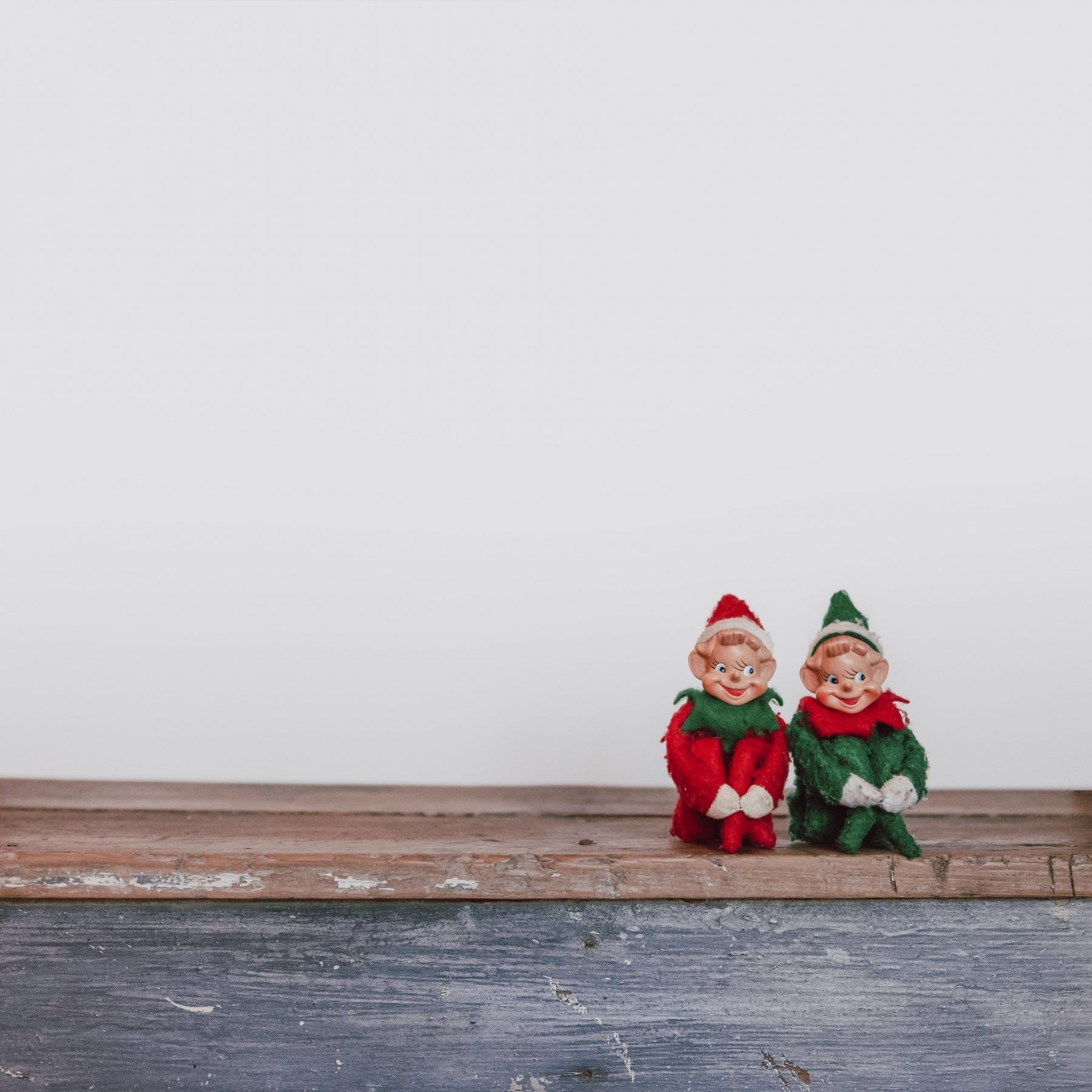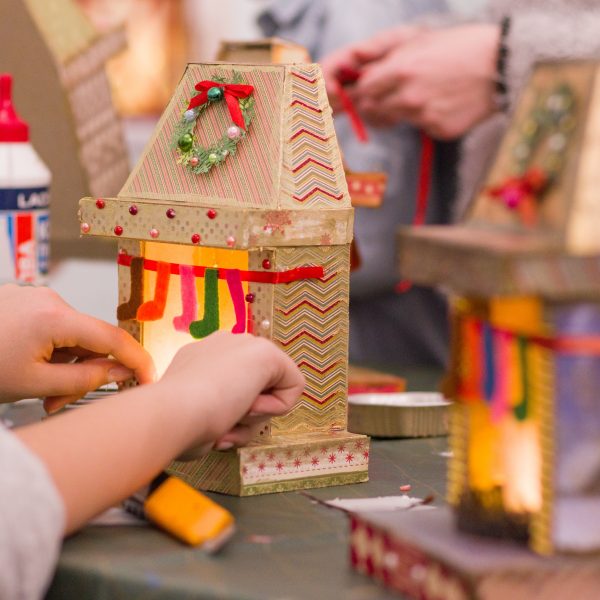Why it might be better to leave the Elf on the Shelf, and out of ECEC

With the increasing popularity in Australia of the American product Elf on the Shelf (EOTS), The Sector has prepared the following reflection which offers some perspective on the tradition in line with the Early Years Learning Framework (EYLF), the National Quality Standard (NQS) and the National Quality Framework (NQF), and its appropriateness for the early childhood education and care (ECEC) space.
What is EOTS?
The Elf on the Shelf is a small elf doll that can be placed on a shelf (or in a Christmas tree, or elsewhere in a home or early learning environment).
EOTS comes with its own website, iPhone apps, merchandise, and a TV Christmas special. Numerous accessories are available for the Elf, along with a number of resources available to support parents and educators to create “elf antics” and mischief.
Children are told that the Elf is alive, and uses magic to move when they are not looking. Elves cannot be touched, or they will lose their magic, and the elves watch to ensure that children behave. Any “wrongs” are reported back to Santa, who places children on the naughty list.
Advertising for EOTS describes the product as follows:
“Every year at Christmas, Santa sends his elves to watch you. And they go back and tell him who’s been bad and who’s been good. The Elf on the Shelf is watching you, what you say, and what you do. The Elf on the Shelf is watching you, each and every Christmas.”
Can Elf and the EYLF coincide?
Curriculum in early childhood, according to the EYLF , is ” all the interactions, experiences, activities, routines and events, planned and unplanned, that occur in an environment designed to foster children’s learning and development’ (page 9).
It is important, then, for educators to consider the presence of EOTS against the requirements of the approved learning frameworks and the NQS.
Does the Elf meet any NQS elements?
An important aspect of children’s ‘belonging, being and becoming’ involves them learning how their behaviour and actions affect themselves and others and developing the skills to regulate these independently. Independent learning and regulation of emotion… how might that sit against “be good….or the Elf will put you on the naughty list!”
Dr Louise Porter (2009) encourages educators and families alike to take a different perspective on managing children’s behaviour, starting with the goal of developing considerate behaviour. This includes learning how to interact with care, empathy and respect, to respond positively to diversity and fairness, and to develop an understanding of reciprocal rights and responsibilities. Learning to communicate feelings and to resolve conflict all support children to be considerate people.
Again, evaluating this against EOTS, are children learning how to interact with care, empathy and respect, with an end goal of becoming considerate, or are they masking “undesirable” behaviour while an ever present threat looms? And what will happen when the threat is removed?
Quality Area Five of the NQF calls on educational leaders, co-ordinators and educators to take a positive, strengths-based approach to guiding children’s behaviour, with the aim of ultimately empowering children to regulate their own behaviour and develop the skills needed to interact and negotiate effectively with others.
Evaluated against this backdrop, EOTS not only becomes problematic, but a curriculum decision which runs directly counter to the outcomes of the NQF.
But isn’t it just for fun? It’s Christmas!
Another core principle of the NQF and EYLF is inclusivity. Critical reflection, which lies at the heart of the NQF, asks early childhood education and care (ECEC) professionals to closely examine all aspects of events and experiences from different perspectives, with a focus on implications for equity, inclusion and diversity.
“At a time when the child’s brain is growing faster than it ever will in its entire lifetime, any curriculum decision we make has potential to affect this development,” Sandi Phoenix, Director and Principal Facilitator of Phoenix Support for Educators said.
“Professional practice as an educator and parenting are two vastly different things. Let’s be careful not to blur the lines here. Educators deliver educational programs for children designed within a nationally approved learning framework, that sits under a quality framework with standards, regulations, and law. Parenting is instead informed by culture, our own experiences of child rearing, our personal beliefs and values, and tradition. If parents want to do EOTS, they’ll do it their way for their own reasons.”
“As educators, practices need to be carefully considered and reflected upon within the frameworks we work with. Conversations in EYLF focused educator groups about things like EOTS get reactions from some educators to the tune of “Why can’t we just have a bit of fun? Do we have to overthink EVERYTHING?!“. Yup. We do. We have a responsibility to consider the psychological benefits and risks of every single curriculum decision. “
What is ‘good’ anyway?
EOTS, Sandi continued, “is often used to demonstrate, amplify, and shape ‘good’ behaviour. What is ‘good’ is subjective. The ‘good’ behaviour is a judgement from the educator (the most powerful person in the room), who is in a position to threaten punishment (Elf telling Santa and Santa giving less presents). There are so many problems with this.”
Rather than being a tool to encourage ‘good’ behaviour, EOTS, she argues, “is often used as a form of coercion and control.”
“When EOTS is used in this way – as behaviour ‘management’, we are getting dangerously close to the line of ‘inappropriate discipline’.
In this factsheet on the matter, ACECQA gives examples of inappropriate practice around discipline, which include:
- criticising a child’s actions or behaviours
- discouraging a child from taking part in activities
- blaming or shaming a child
EOTS actively gives educators a tool to shame children into ‘good’ behaviour, under the guise of not being allowed to participate in Christmas, and places a sense of shame on the child for their behaviour.
Is surveillance ok?
Many educators would, and have had, strong reactions to the idea of cameras being installed in the rooms in which they work, citing concerns about privacy, a sense of being watched, and leaving themselves open to litigation if footage is taken out of context.
These same educators, Sandi argued, are often the ones introducing EOTS under the guise of “Christmas fun.”
“Imagine your boss installing cameras at work,” she said.
“The thing is – these cameras don’t actually work. However, your boss tells you they work – for the purpose of manipulating your behaviour via the perception of surveillance. Your boss then actively goes about pretending they do work and reminding you that if your behaviour isn’t ‘good’, it will be caught on camera. How’s that feeling?”
“Children are human. They have needs and rights just like we do. Using an Elf who reports back to Santa is just as bad, if not worse, than your boss’s pretend cameras.”
Is there a positive way to use EOTS?
For those services who choose to engage in critical reflection about EOTS and the role it may play in their space, Sandi offers the following suggestions.
“If you’re going to use EOTS in the classroom, I’d encourage it to be used differently. Let the children in on the secret – that we can use the Elf to surprise people. We can pretend together that the Elf is magical and alive. Then we can surprise them with a Random Act of Kindness (RAK).”
“Perhaps the Elf can make our friends in another group a cake. Or maybe the Elf can make a gift for a friend. Wouldn’t it be cool if he washes someone’s car for them? Or maybe the children can take Elf into the community to spread RAKs all over town. The sky’s the limit. You could do some as a whole group, but you could also encourage children to come up with their own Elf antics if they want to do something nice for someone themselves.”
When used in this way, three exciting things are going to happen, she continued.
- The children, families, and educators will learn about RAKs and how uplifting they can be for all involved.
- The children will experience how it feels to do something altruistic without taking the credit.
- Children get to experience the ‘magic’ of Christmas as active participants, rather than it happening ‘to them’.
For additional perspectives on EOTS in an early learning environment please see here.
Popular

Quality
Practice
Provider
Workforce
Reclaiming Joy: Why connection, curiosity and care still matter in early childhood education
2025-07-09 10:00:07
by Fiona Alston

Policy
Practice
Provider
Quality
Research
Workforce
Beyond the headlines: celebrating educators and the power of positive relationships in early learning
2025-07-07 10:00:24
by Fiona Alston

Workforce
Policy
Quality
Practice
Provider
Research
ECEC must change now, our children can’t wait for another inquiry
2025-07-02 07:47:14
by Fiona Alston













